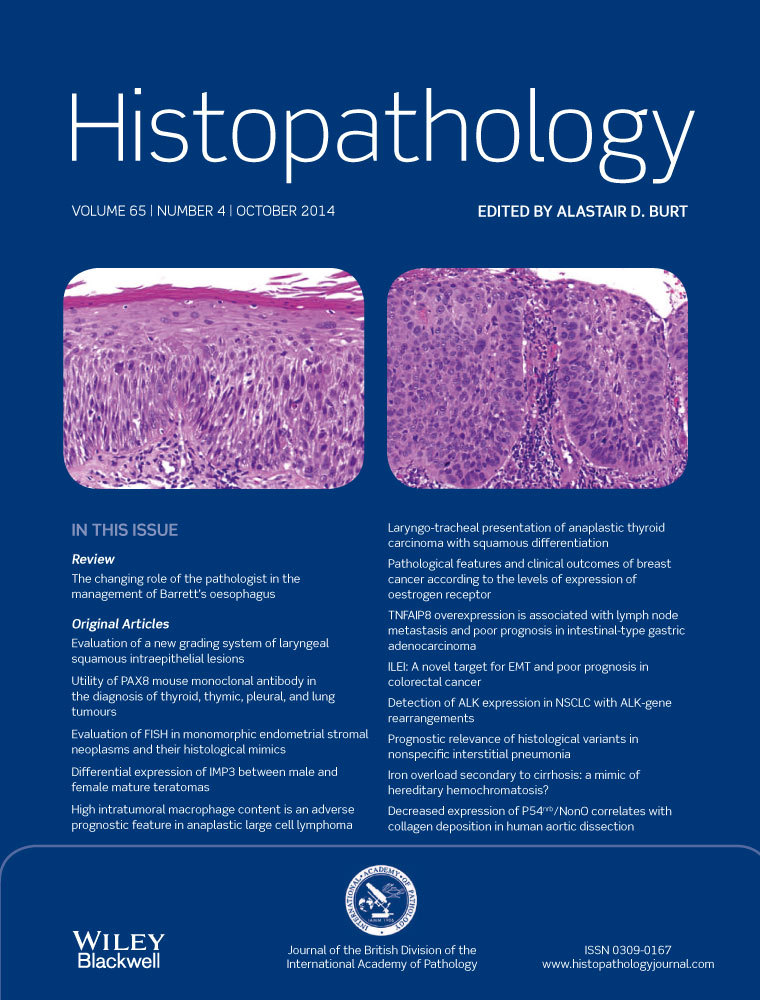Iron overload secondary to cirrhosis: a mimic of hereditary haemochromatosis?
Abstract
Aims
Hepatic iron deposition unrelated to hereditary haemochromatosis is common in cirrhosis. The aim of this study was to determine whether hepatic haemosiderosis secondary to cirrhosis is associated with iron deposition in extrahepatic organs.
Methods and results
Records of consecutive adult patients with cirrhosis who underwent autopsy were reviewed. Storage iron was assessed by histochemical staining of sections of liver, heart, pancreas and spleen. HFE genotyping was performed on subjects with significant liver, cardiac and/or pancreatic iron. The 104 individuals were predominantly male (63%), with a mean age of 55 years. About half (46%) had stainable hepatocyte iron, 2+ or less in most cases. In six subjects, there was heavy iron deposition (4+) in hepatocytes and biliary epithelium. All six of these cases had pancreatic iron and five also had cardiac iron. None of these subjects had an explanatory HFE genotype.
Conclusions
In this series, heavy hepatocyte iron deposition secondary to cirrhosis was commonly associated with pancreatic and cardiac iron. Although this phenomenon appears to be relatively uncommon, the resulting pattern of iron deposition is similar to haemochromatosis. Patients with marked hepatic haemosiderosis secondary to cirrhosis may be at risk of developing extrahepatic complications of iron overload.




